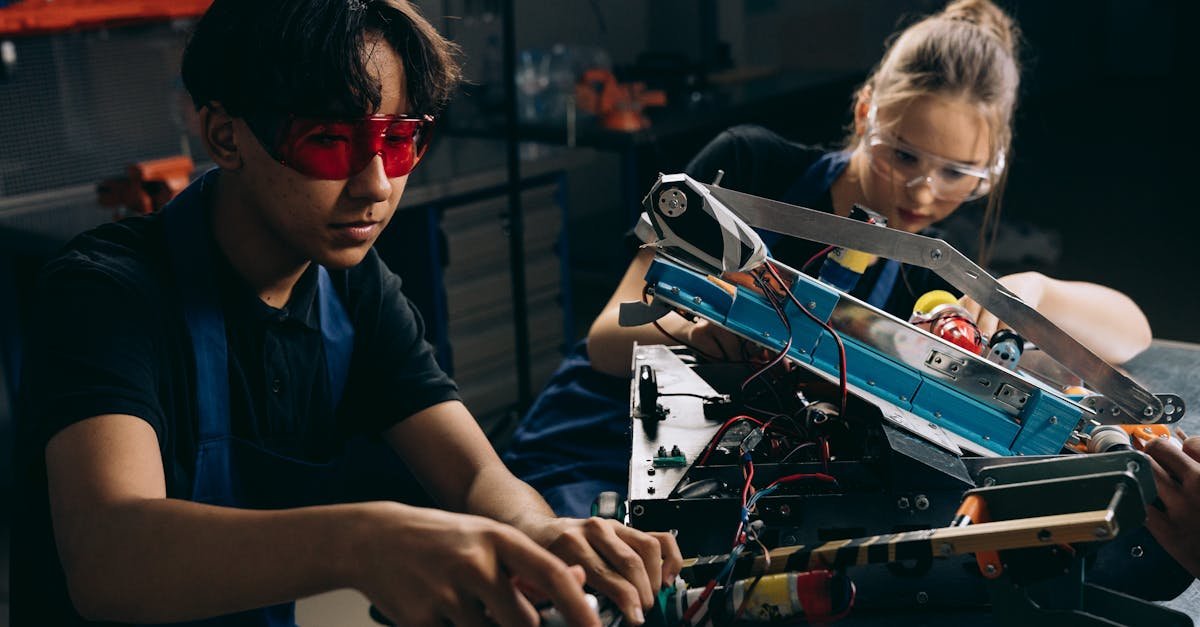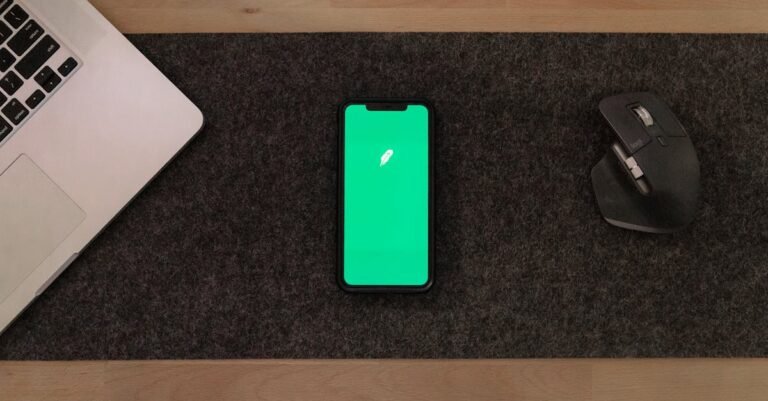Riding the Wave: Exploring the Top Altcoins Powering the Future of Artificial Intelligence
Hey everyone! Let’s talk about something super exciting happening right now: the incredible boom in Artificial Intelligence, or AI. It feels like everywhere you look, AI is changing the game, from chatbots that write poetry to algorithms predicting stock market trends. But what happens when you mix this AI revolution with another groundbreaking technology – cryptocurrency and blockchain? You get something potentially transformative: AI altcoins.
Maybe you’ve heard the buzzwords flying around – decentralized AI, crypto AI projects, AI token utility. It sounds complex, maybe even a little intimidating. But trust me, the core idea is fascinating and could reshape how we develop, access, and benefit from artificial intelligence. It’s like watching two giant waves merge into something even bigger and more powerful.
Think about it. AI needs vast amounts of data and computing power, right? And traditional ways of getting these can be expensive, controlled by big companies, and sometimes raise privacy concerns. Blockchain, with its decentralized nature, offers potential solutions. Imagine a world where computing power isn’t just locked up in massive data centers but shared across a global network, or where data can be used for training AI without compromising individual privacy. This is the promise that gets people like me really curious about this space. We’re not just talking about another crypto trend; we’re talking about building the very infrastructure for a more open, fair, and powerful AI future. So, grab a cup of coffee, get comfortable, and let’s dive into the world of AI altcoins together. We’ll explore what they are, why they’re generating so much excitement, and look at some of the top contenders leading the charge.
What Exactly Are AI Altcoins and Why Is Everyone Talking About Them?
Alright, let’s break it down. What are these AI altcoins we keep hearing about? At its heart, an AI altcoin is simply a cryptocurrency, like Bitcoin or Ethereum, but specifically designed to power or support projects related to artificial intelligence. Think of the coin, the token, as the fuel or the currency within a specific AI focused ecosystem built on the blockchain.
But why combine AI and blockchain? Aren’t they separate worlds? Well, they were, but technologists and innovators realized they could solve each other’s problems in really interesting ways. It’s a symbiotic relationship, a real two way street. Let’s unpack that a bit, because understanding this synergy is key to grasping the potential here.
First, consider the challenges AI faces:
- Data Hunger and Silos: AI models, especially deep learning ones, need massive datasets to learn effectively. Often, this data is locked away by big corporations (think Google, Facebook, Amazon). It’s hard for smaller players or researchers to get access, stifling innovation. Furthermore, using sensitive data raises huge privacy flags.
- Computational Cost: Training complex AI models requires immense processing power, usually from specialized hardware like GPUs (Graphics Processing Units). This is expensive and, again, often centralized in the hands of a few large cloud providers.
- Trust and Transparency: How do you know an AI is making fair decisions? How can you verify its training data wasn’t biased? Black box AI models can be opaque, making it hard to trust their outputs, especially in critical applications like finance or healthcare.
- Monetization and Incentives: How do you fairly reward people or organizations who contribute valuable data or AI algorithms? How do you create a market for AI services that’s open and accessible?
Now, here’s where blockchain and crypto step in, offering potential solutions:
- Decentralized Data Marketplaces: Projects are using blockchain to create platforms where data can be shared or sold securely and transparently. Techniques like federated learning (training models on decentralized data without moving the data itself) combined with blockchain can enhance privacy. Imagine accessing diverse datasets without relying on a central intermediary. Ocean Protocol is a notable example exploring this.
- Decentralized Computing Networks: Why rely solely on Amazon AWS or Google Cloud? Blockchain projects are building networks where individuals and data centers can rent out their unused computing power (CPU or GPU). Cryptocurrencies act as the incentive, paying providers for their resources. This could democratize access to the power needed for AI training and inference. Render Network (RNDR) is a prime example, focusing initially on graphics rendering but expanding into AI computation.
- Transparency and Audit Trails: Blockchain’s immutable ledger can record key information about AI models – the data used for training, the parameters, the decision making processes. This creates a verifiable audit trail, increasing trust and accountability. You could potentially trace back an AI’s decision path.
- Tokenized Incentives: AI altcoins provide the mechanism to reward participants. Data providers get paid in tokens, GPU providers earn tokens, developers contributing AI algorithms can monetize their creations directly on decentralized marketplaces. This fosters a vibrant ecosystem where contributions are valued and rewarded, driving network growth. Fetch.ai uses its FET token for agent interactions, while SingularityNET uses AGIX for transactions on its AI marketplace.
But it’s not just blockchain helping AI. AI can also supercharge blockchain technology:
- Smarter Smart Contracts: AI can analyze smart contracts for vulnerabilities before deployment, potentially preventing costly hacks. It could also enable more complex, adaptive contracts that respond intelligently to real world events.
- Enhanced Security: AI algorithms are brilliant at pattern recognition. They can monitor blockchain networks for suspicious activities, detect fraud attempts, and identify potential security threats far faster than humans can.
- Better Oracles: Blockchains often need reliable real world data (like prices or weather conditions) fed into them via oracles. AI can help filter, verify, and interpret this data, making oracles more robust and trustworthy.
- Predictive Analytics: AI can analyze blockchain data (transaction patterns, network activity) to provide insights for traders, developers, and network operators.
- Improved User Experience: Imagine AI powered wallets that offer personalized insights or dApps (decentralized applications) with intelligent, user friendly interfaces.
So, the hype isn’t just about slapping “AI” onto a crypto project. It’s about this fundamental potential for synergy. The current AI crypto trends are driven by the narrative that these technologies together can build a more open, decentralized, and intelligent digital future. Investors see the massive growth in the AI sector and are betting that the blockchain based infrastructure supporting it will grow alongside it. They see projects creating decentralized alternatives to the services currently dominated by Big Tech. The possibility of owning a piece of that future infrastructure, represented by these AI altcoins, is incredibly appealing. It feels like getting in early on the next evolution of the internet, where intelligence itself becomes a distributed, accessible resource. Of course, it’s still early days, and many challenges remain – scalability, user adoption, regulation – but the vision is compelling, and that’s why everyone’s talking about AI crypto projects.
Top AI Altcoins Making Waves Right Now
Okay, now for the part many of you have been waiting for! Let’s zoom in on some specific AI altcoins that are generating significant buzz and seem to be building something substantial. Remember, the crypto space moves incredibly fast, and things can change quickly. This isn’t financial advice, but rather an exploration of interesting projects based on their technology, vision, and activity. Doing your own thorough research is absolutely crucial before considering any involvement. We’ll look at three projects that represent different approaches within the blockchain and AI intersection: Fetch.ai (FET), SingularityNET (AGIX), and Render (RNDR).
Fetch.ai (FET): Unleashing Autonomous Economic Agents
Imagine a world teeming with digital helpers, or “agents,” that can autonomously perform tasks for you, negotiate services, and manage resources. That’s the vision behind Fetch.ai. It’s building a decentralized machine learning platform based on a high throughput blockchain where these software agents can live, communicate, and transact value. Think of it as an internet of agents, designed to automate complex tasks in areas like DeFi (Decentralized Finance), transportation, energy grids, and supply chain management.
The core idea revolves around Autonomous Economic Agents (AEAs). These are intelligent software programs designed to act independently on behalf of individuals, organizations, or even devices (like your smart thermostat or electric vehicle). Fetch.ai provides the infrastructure for these agents to find each other, negotiate, and execute agreements. For example, an agent representing your electric car could automatically find the cheapest charging station nearby, negotiate the price, and pay for the charge, all without direct human intervention. Another agent might manage your DeFi portfolio, automatically moving assets to maximize yield based on predefined strategies. The potential applications are vast, aiming to create a more efficient and automated economy.
How does it work technically, without getting lost in jargon? Fetch.ai uses a combination of technologies. It has its own blockchain, designed for speed and low transaction costs, suitable for frequent agent interactions. It features the Open Economic Framework (OEF), which acts like a decentralized search engine allowing agents to discover each other based on the services they offer or need. And crucially, it incorporates machine learning and AI not just *within* the agents but also in the network itself to optimize operations and agent discovery.
The native cryptocurrency, FET token, is the lifeblood of this ecosystem. What’s its utility?
- Agent Registration and Connection: Developers need FET to register their agents on the network and connect them to the OEF, making them discoverable.
- Transaction Fees: Like gas on Ethereum, FET is used to pay for computations and transactions performed by agents on the Fetch.ai network.
- Staking: Users can stake FET to help secure the network through its proof of stake consensus mechanism and earn rewards in return. This aligns incentives between token holders and network health.
- Governance: FET holders may gain voting rights on future network upgrades and decisions, giving the community a say in the project’s direction.
The value of FET is thus intrinsically linked to the activity and growth of the Fetch.ai network. More agents, more transactions, more demand for staking – all these factors could potentially drive demand for the FET token.
Fetch.ai has been actively developing its ecosystem, fostering tools for developers to build agents, and exploring partnerships in various industries. They’ve worked on projects related to supply chain visibility, smart parking, and decentralized derivatives platforms. However, like any ambitious project, it faces challenges. Gaining widespread adoption for its agent based model requires convincing developers to build on its platform and users to trust these autonomous systems. Competition also exists from other blockchain platforms and traditional AI companies developing automation solutions. Nonetheless, its unique vision of a decentralized agent economy makes Fetch.ai a fascinating project to watch in the AI crypto projects space.
SingularityNET (AGIX): A Decentralized Marketplace for AI Services
Next up is SingularityNET, often associated with its connection to Sophia the Robot and led by the well known AI researcher Dr. Ben Goertzel. SingularityNET’s grand vision is to create a decentralized, open, and democratic marketplace for AI services. Think of it like an App Store, but specifically for AI algorithms and services, running on the blockchain.
The core problem SingularityNET aims to solve is the fragmentation and siloing of AI development. Currently, many powerful AI tools are locked within large corporations or specific research labs. SingularityNET wants to break down these walls, allowing anyone, anywhere, to create, share, deploy, and monetize AI services at scale. Developers can publish their AI algorithms on the platform, making them accessible to businesses and individuals who need specific AI capabilities – image recognition, natural language processing, data analytics, and potentially much more complex services in the future.
How does this marketplace function? It uses blockchain technology to handle registration, discovery, and payment for AI services. Developers can wrap their AI models into standardized containers and list them on the network. Users (or other AI agents) can then browse the marketplace, find the AI service they need, and pay for its use using the platform’s native token, AGIX. The blockchain ensures transparent and secure transactions between AI providers and consumers. The long term goal is ambitious: to foster collaboration between different AI agents on the network, potentially leading them to combine their capabilities and learn from each other, inching towards Artificial General Intelligence (AGI) – AI with human like cognitive abilities. This AGI aspect is a key part of SingularityNET’s long term vision, though it remains a highly complex and futuristic goal.
The AGIX token is central to the SingularityNET ecosystem. Its utility includes:
- Payments: AGIX is the primary currency used to pay for AI services offered on the marketplace. Need an AI to analyze some text? You’ll pay the provider in AGIX.
- Staking: Token holders can stake AGIX to contribute to the platform’s operations (like curation or reputation management) and earn rewards.
- Governance: AGIX holders are expected to play a role in governing the network, influencing decisions about its future development, operational parameters, and potentially how the marketplace evolves.
- Rewarding Developers: It provides a direct way for AI developers worldwide to monetize their creations without relying on traditional gatekeepers.
Demand for AGIX is theoretically tied to the usage of the AI marketplace. The more AI services are listed and consumed, the more transactions occur in AGIX, potentially increasing its demand and value. The platform aims to create a positive feedback loop: more users attract more developers, leading to more services, which attracts more users.
SingularityNET has been fostering an ecosystem of projects and spin offs focused on specific areas like DeFi (SingularityDAO), biomedical AI (Rejuve.AI), and music generation (NuNet). This strategy aims to demonstrate the power of the platform across different verticals. However, building a truly thriving, liquid, and widely adopted decentralized AI marketplace is a monumental task. Challenges include ensuring the quality and reliability of AI services listed, simplifying the user experience for non technical users, and competing with established cloud based AI platforms. Despite these hurdles, SingularityNET’s focus on creating an open ecosystem for AI services and its ambitious AGI goals make AGIX a prominent name in the AI altcoin discussion.
Render Network (RNDR): Decentralizing GPU Power for AI and Graphics
Our third project, Render Network, tackles a different but equally critical bottleneck: the immense demand for computing power, specifically GPU power. Initially focused on revolutionizing the digital creation process by providing decentralized GPU rendering for artists and studios, Render’s relevance has exploded with the rise of AI, which also heavily relies on GPUs for training and inference.
The problem Render addresses is straightforward. High end GPUs are expensive, and the demand for rendering complex graphics (for movies, games, architectural visualization, the metaverse) and training AI models often outstrips the available supply or makes centralized cloud GPU services costly. On the other hand, millions of GPUs sit idle in computers around the world when not being used for gaming or intensive tasks. Render connects these two sides: those needing GPU power (Creators and AI developers) and those having spare GPU capacity (Node Operators).
The technology works through a blockchain based marketplace. Creators submit rendering jobs (or potentially AI computation tasks) to the network. Node operators with registered GPUs pick up these jobs, perform the computations using their hardware, and submit the results. Render uses a unique consensus mechanism called Proof of Render (though evolving, the core idea is verifying the work was done correctly) to validate the completed tasks before releasing payment. This creates a distributed global network of GPU power accessible on demand.
The native token, RNDR, facilitates this entire process. Its utility is clear:
- Payment for Services: Creators and AI developers use RNDR tokens (or potentially stablecoins convertible via RNDR) to pay for the rendering or computation jobs performed by the network.
- Rewarding Node Operators: GPU providers earn RNDR tokens for successfully completing jobs and contributing their hardware to the network. This incentivizes participation and network growth.
- Staking (Potential/Future): While specifics might evolve, staking mechanisms could be implemented for node operators or curators to ensure network integrity and quality of service, earning RNDR rewards.
- Governance: As the network matures, RNDR tokens could grant holders voting rights on proposals related to network upgrades, fee structures, and overall direction.
The demand for the RNDR crypto is directly linked to the demand for decentralized GPU processing. As industries like high fidelity graphics, virtual reality, augmented reality, and especially artificial intelligence continue to grow, the need for accessible and scalable GPU power is expected to soar. If Render Network can capture a significant portion of this market, the demand for RNDR tokens to pay for these services could increase substantially. It represents a bet on the infrastructure needed for both the metaverse and the AI computation revolution.
Render has already gained traction in the digital art and visual effects community, integrating with popular creation software and boasting involvement from notable artists and studios. Its expansion into AI computation is a logical and potentially huge next step. The challenges include ensuring consistent performance and security across a diverse network of nodes, competing with giant centralized cloud providers (like AWS, Google Cloud, Azure) who also offer GPU instances, and navigating the technical complexities of distributing large scale AI training jobs. However, its established niche in rendering and the sheer scale of the potential market for decentralized GPU power make Render Token a key player in the intersection of blockchain, AI, and digital creation.
Doing Your Homework: How to Research and Evaluate AI Altcoins
Okay, we’ve looked at some exciting projects, but maybe you’re thinking, “How do I find the *next* big thing?” or “How do I know if a project is legitimate or just hype?” That’s a super important question. Venturing into the world of AI altcoins, or any crypto investment for that matter, requires careful research and a healthy dose of skepticism. This isn’t about getting rich quick; it’s about understanding the technology, the potential, and the risks involved. Remember, this is not financial advice, and you should always do your own research (DYOR) before making any decisions.
So, how do you approach this research? Let’s break down the key areas you should investigate when evaluating AI crypto projects:
1. Project Vision and Real World Use Case:
- What problem is it actually solving? Is it a genuine problem at the intersection of AI and blockchain, or does the AI or blockchain component feel tacked on?
- Is the AI integration meaningful? How specifically does AI enhance the project, or how does the blockchain benefit the AI application? Be wary of projects just using “AI” as a buzzword.
- Who is the target audience? Is there a clear market for the proposed solution? Is the use case realistic and achievable?
- Does the vision resonate? Is it trying to achieve something truly innovative, or is it just a copycat of another project?
Read the project’s website and whitepaper carefully. The whitepaper should clearly articulate the problem, the proposed solution, the technology involved, and the overall vision. If it’s vague, overly technical without substance, or makes outlandish promises, that’s a red flag.
2. Technology and Implementation:
- Is the underlying blockchain suitable? Is it scalable enough to handle the proposed workload? Is it secure? What consensus mechanism does it use?
- How does the AI component work? Does the team demonstrate real AI expertise? Is the AI approach feasible and sound? Are there demos or proof of concepts available?
- Is the code open source? Check their GitHub repository. Is there active development? Are there regular commits and updates? Open source projects allow for greater transparency and community scrutiny.
- What are the technical challenges? Every ambitious project faces hurdles. Does the team acknowledge these challenges and have plausible plans to address them?
You don’t need to be a PhD in computer science, but try to grasp the basics of how the technology is supposed to work. Look for reviews or analyses from technically knowledgeable people in the crypto community.
3. Team and Partnerships:
- Who is behind the project? Is the team public and transparent? Do they have relevant experience in both AI and blockchain? Look them up on LinkedIn. Beware of anonymous teams, especially for complex projects.
- Are there strong advisors? Reputable advisors can add credibility, but check if their involvement is active or just name lending.
- What partnerships do they have? Are the partnerships meaningful and strategic, or just marketing fluff? Do the partners actively use or contribute to the project? Real world adoption and integration are key indicators.
A strong, experienced, and transparent team is crucial for navigating the complexities of building and launching a successful crypto project, especially one involving advanced tech like AI.
4. Tokenomics (The Economics of the Token):
- What is the token’s utility? This is critical. Why does the token exist? Is it needed to access the service, pay fees, stake for security, or participate in governance? AI token utility needs to be clear and integrated into the platform’s core functions.
- Is there a clear link between platform usage and token demand? Ideally, as the platform grows and adoption increases, the demand for the token should also increase.
- What is the total supply and distribution? Is the supply fixed or inflationary? How were the tokens initially distributed (ICO, private sale, team allocation, community rewards)? Large allocations to the team or early investors that unlock quickly can create selling pressure.
- Are there staking rewards or burning mechanisms? Staking can incentivize holding, while burning can reduce supply, potentially affecting price (though not guaranteed).
Tokenomics are fundamental to a token’s potential long term value. A token without real utility or poorly designed economics is unlikely to succeed, even if the underlying technology is good. Thoroughly understanding the tokenomics AI projects employ is vital.
5. Community and Ecosystem:
- Is there an active and engaged community? Check their social media channels (Twitter, Discord, Telegram). Is there healthy discussion, developer activity, and support? A strong community can be a powerful asset.
- Is the ecosystem growing? Are developers building on the platform? Are new applications or services emerging within its ecosystem?
- How does the project team interact with the community? Are they responsive, transparent, and open to feedback?
A vibrant community and a growing ecosystem often indicate a project has momentum and is gaining traction.
6. Market Position and Competition:
- Who are the main competitors? This includes other crypto projects and traditional, centralized companies offering similar services.
- What is the project’s unique selling proposition (USP)? What makes it different or better than the competition?
- What is the potential market size? How large is the addressable market for the problem the project is solving?
Understanding the competitive landscape helps gauge the project’s potential for capturing market share.
7. Roadmap and Development Activity:
- Does the project have a clear roadmap? What are the upcoming milestones and future plans?
- Are they meeting their roadmap goals? Check their progress against past promises. Consistent development and hitting milestones build confidence.
- Is development ongoing? Again, check GitHub activity and project updates. A project with little to no recent development activity is a major red flag.
Where to Find Information?
- Project Website & Whitepaper: Start here for the official overview.
- GitHub: To check development activity.
- Block Explorer: To view on chain activity, token distribution, etc. (e.g., Etherscan for Ethereum based tokens).
- CoinMarketCap / CoinGecko: For market data, price history, links to official resources.
- Crypto News Outlets: Reputable sources for news and updates (e.g., CoinDesk, Cointelegraph, The Defiant – but always cross reference).
- Project Social Channels: Discord, Telegram, Twitter for community engagement and announcements.
- Third Party Analysis: Look for research reports or analyses from reputable crypto research firms or independent analysts (be critical of sources).
Performing this kind of AI crypto projects analysis takes time and effort, but it’s the best way to navigate the space intelligently and avoid potential pitfalls. Don’t rely on hype or social media influencers alone. Dig deep, ask critical questions, and form your own informed opinion. The intersection of AI and blockchain is exciting, but diligence is your best friend.
The Future is Intelligent and Decentralized
So, we’ve journeyed through the exciting landscape where artificial intelligence meets blockchain technology. We’ve seen that AI altcoins aren’t just a fleeting trend but represent attempts to build the fundamental infrastructure for a more open, accessible, and potentially fairer AI future. By leveraging the decentralized, transparent, and incentive driven nature of blockchain, these projects aim to tackle some of AI’s biggest challenges: data accessibility, computational bottlenecks, trust, and monetization.
We explored how blockchain can provide secure data marketplaces, decentralized computing power, verifiable audit trails for AI models, and tokenized incentives to fuel innovation. We also touched upon how AI, in turn, can enhance blockchain with smarter contracts, improved security, and better analytics. It’s a powerful synergy.
We dove into specific examples like Fetch.ai (FET) building an economy of autonomous agents, SingularityNET (AGIX) creating a decentralized AI services marketplace, and Render (RNDR) providing distributed GPU power crucial for both graphics and AI computation. These projects, each with its unique approach and token utility, highlight the diverse ways developers are exploring this intersection.
Most importantly, we emphasized the need for thorough research and critical evaluation. Understanding the project’s vision, technology, team, tokenomics, community, and competitive landscape is crucial before getting involved. Remember the mantra: Do Your Own Research (DYOR).
The convergence of AI and blockchain is still in its early innings, full of potential but also uncertainty and risk. Yet, the vision it paints – one of democratized intelligence, where innovation isn’t solely confined to tech giants, and where users have more control over their data and digital interactions – is undeniably compelling. It’s about building a future that is not just smarter, but also more decentralized and user centric.
If this exploration has sparked your curiosity, don’t let it stop here. The world of AI crypto projects is vast and constantly evolving. Choose a project that genuinely interests you, dive into its whitepaper, join its community discussions on Discord or Telegram, and follow its development progress. See if the vision aligns with your view of the future. The journey of learning about these cutting edge technologies is valuable in itself. What are your thoughts on the future of AI and blockchain? Feel free to continue the conversation and share your own insights!









